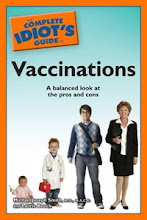Realistically, with the powerful American Medical Association and other organizations lobbying hard to block the cuts, Medicare reimbursements probably will not be cut right now. As an alternative, Congress might freeze the current reimbursement rates for five years.
Unfortunately, the drama of threats to cut Medicare and lobbying to restore these cuts has been going on for years in Washington, with three delays in the proposed cut this year alone. Medicare reimbursement rates are based on a much-criticized GDP-based formula. As Robert Lowes explains in a cogent Medscape article on the cuts:
Right now, reimbursement is determined by the so-called sustainable growth rate (SGR) formula, which sets an annual target for Medicare spending on physician services based partly on the growth of the gross domestic product. If actual spending tops the target, Medicare is supposed to decrease physician pay the next year to recoup the difference. Congress has called off annual SGR-triggered cuts going back to 2003, so the gap between actual and targeted spending on physician services has continued to grow, resulting in the 21.2% decrease for 2010.Congress has been slow to revise this formula to reflect the true cost of providing health care to seniors because it would be expensive to do so.
At the same time, President Obama is spearheading an international health initiative to prevent or treat certain tropical diseases such as river blindness and hookworm, reports Sabin Vaccine Institute President Peter J. Hotez in a New York Times Op-Ed. These "neglected tropical diseases" torment over one billion people in the poorest nations, but they are rare in the developed world, and as a result there has been little financial incentive to eliminate them.
Treating and preventing these diseases is not just an act of altruism. Because these diseases affect children's physical and mental development, preventing the diseases makes it easier for the world's poorest citizens to stay healthy enough to gain an education and care for their families. As a result, the economic and political stability of many troubled regions improves, ultimately improving our own national security.
But can we really have it both ways: provide health care coverage for U.S. seniors and the disabled, and help improve health care for the poor in other countries, while our unemployment rate is 9.9% nationwide, raising taxes scares politicians, and about 80 million Baby Boomers are poised to retire and draw on their federal benefits? Have we promised more than we can deliver? And if we have, what will we change to make it right?



